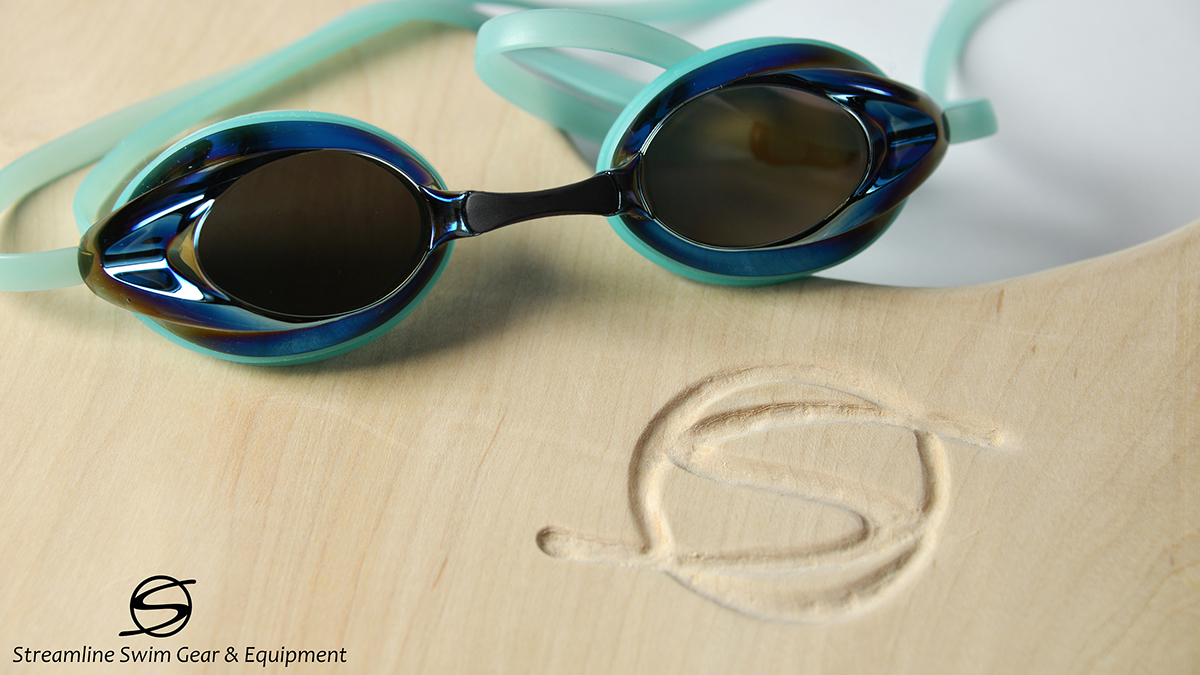Design Principles II, Spring 2016, Instructor: Liz Knight
Designing for the Professional Swimmer
Reinventing the kickboard to better suit the needs of a professional swimmer.

Prompt | Timeline: 4 Weeks
Based on the topic you are assigned, conduct research regarding that topic and design an object for a specified user group. Justify why your design is important for those users.
Process
The research topic I was under was "Sports." I decided that I wanted to investigate swimming as the sport, and went to the Brown University pool many times to determine who my potential users could be. I came upon four different user groups who engage with the pool environment. I noticed that each of these groups had different objectives in mind when in the environment.

After observing these user groups over several occasions, I decided that I wanted to design for the professional swimmer. I then created the following problem statement and user profile.

As I was designing for the professional swimmer, I wanted to understand the reasons why these users practiced drills, which fill the majority of their workout sessions.
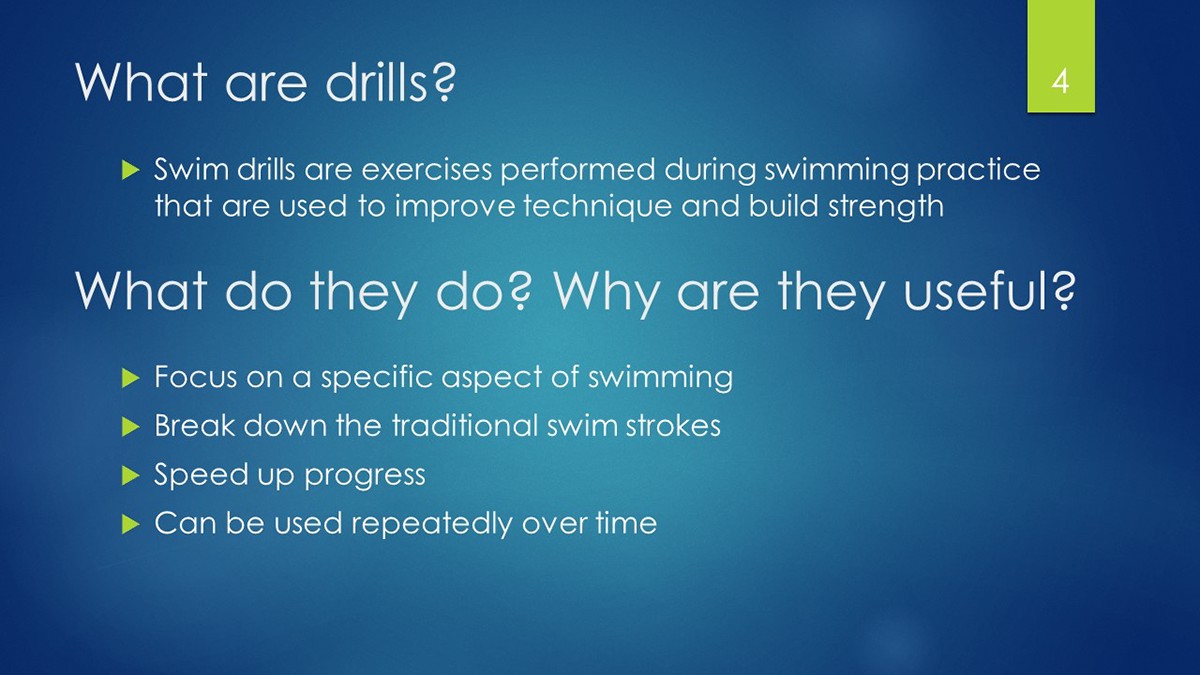
From my preliminary research, I took note of how many of these swimmers used the pool equipment available to them in their workouts. These equipment types broke down into four categories: kickboards, flippers, pull buoys, and paddles.

I found that drills can be done both with equipment or without. In my initial concept sketches, I tried to develop equipment that could help facilitate a drill or that could work towards the swimmers’ goals of building strength and improving technique. Below are a few of my ideas:
1. Balls that can be strapped to the hand for resistance drills, easier for swimmers to focus on the goals of the drill, rather than the equipment
2. Ankle floats that can be used in place of pull buoys
3. Buzzer that can be strapped to the user's wrist to help count laps or help with stroke rhythm
4. Weights that can be added to the front of a "shoe" to help increase leg and kicking strength
5. Underwater goalpost that can help swimmers aim for specific distances, locating the optimal point to break the water's surface
6. Dryland resistance machine designed to increase leg strength.

During these concept sketches, I also was interested in developing products that already exist and finding ways for which to improve them to help serve professional swimmer’s needs better. One interest that I had was the design of kickboards, as they are used approximately 70% of the time in professional swimmer’s workouts, they can be multi-functional, and they also strengthen core muscles of swimmers when in use.
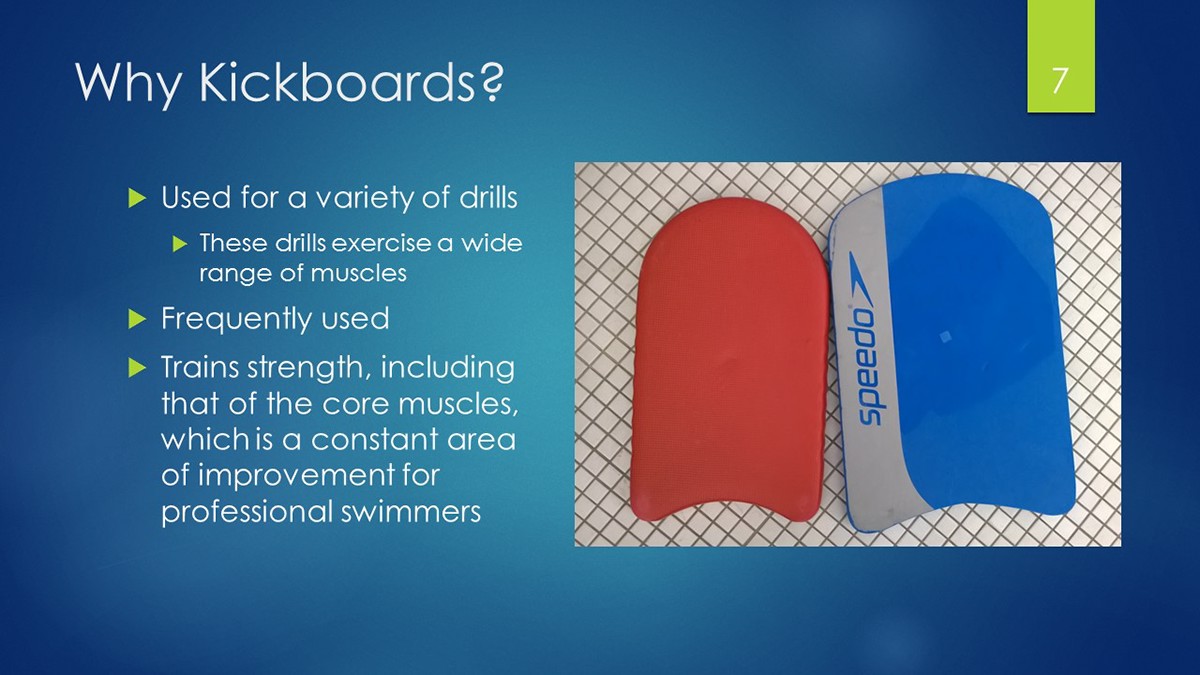
Part of my research included asking users how they felt about the equipment they were using.


I came up with the idea to create a kickboard that could increase resistance. Resistance would help build strength faster, and the workouts could become more demanding for users who needed them to be. I began sketching ideas with kickboards and coming up with concepts for how the kickboard could have built-in features that would create resistance. Many of these features were add-ons that involved thickening the board in different locations, or creating tapered chutes for the water to go through, that would inherently increase drag.

From these built-on aspects, I shifted to thinking about the shape of the board. In the top left, you can see the shape of the traditional kickboard. I noticed that this kickboard was curved for the water to streamline around it, and I started to think of water flow and how the design could create increased resistance just by its shape. By the time I arrived at the right-hand side sketches, I was also thinking of how swimmers could change the orientation of the board to create a workout of a differing intensity.

I continued to play with the shape of the board, keeping in mind the idea of having the ability to turn the board around 180 degrees so as to have another type of kickboard. At this point in my research I was also measuring swimmers’ bodies so as to create the ideal size of the board.
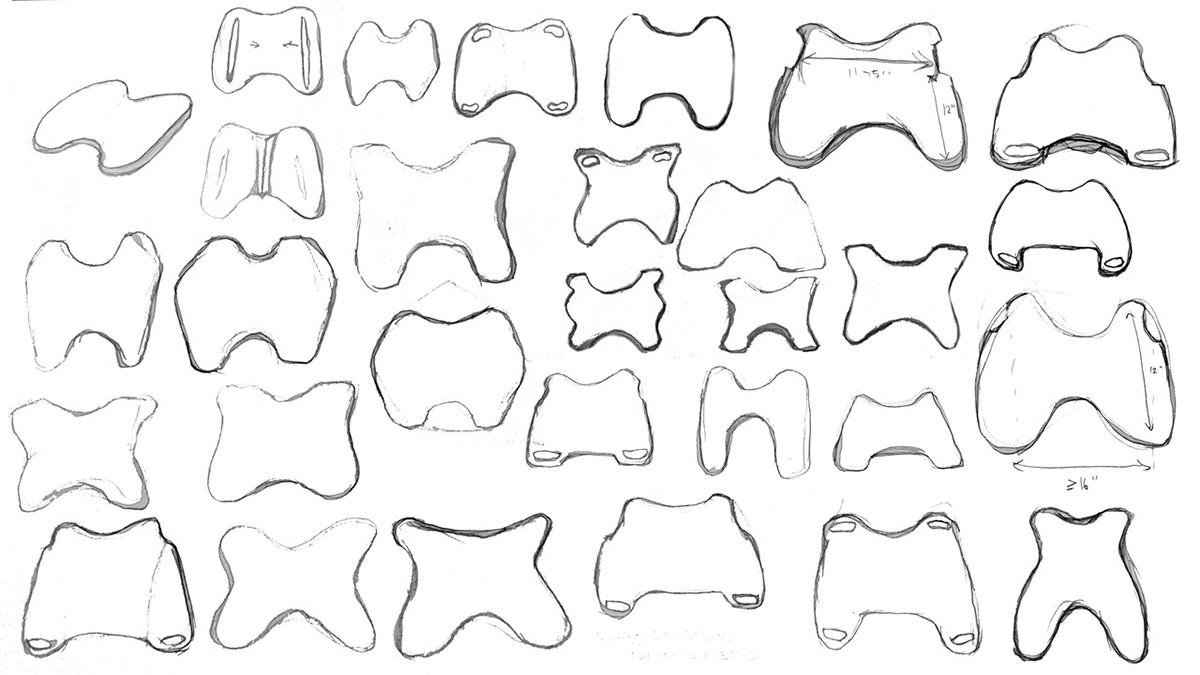
One other challenge I had to face was designing handles and spaces for the hands. I thought about them being physical parts of the board, or cut-outs.
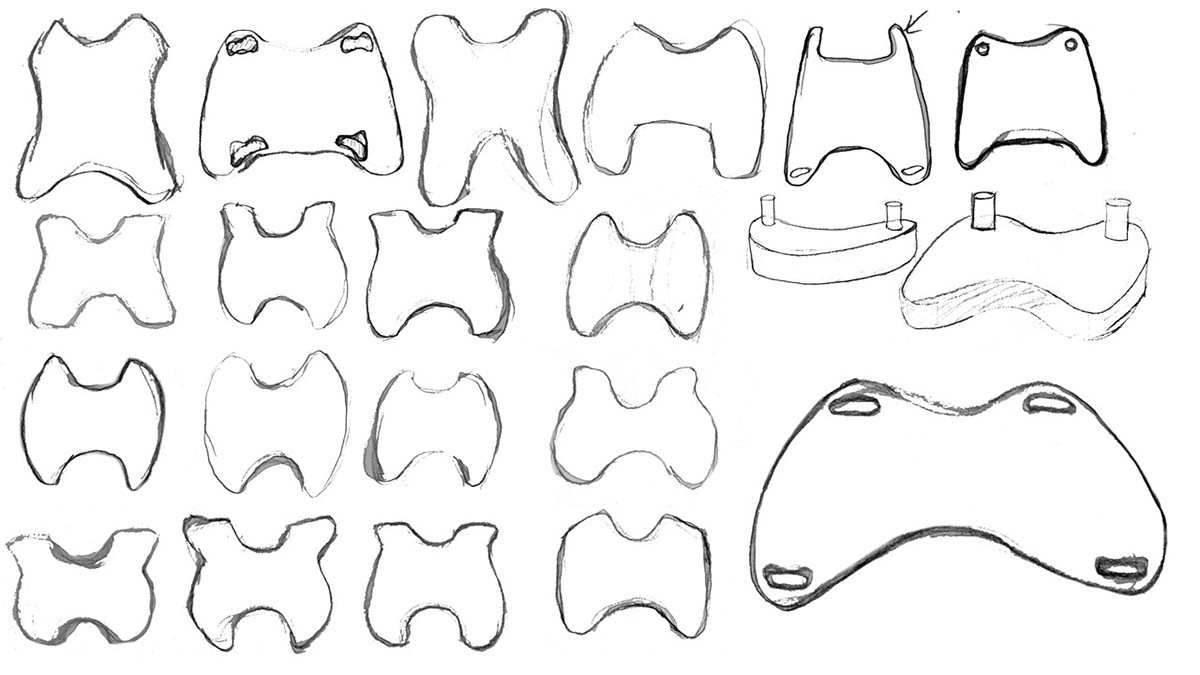
After making more models and actually putting them in the hands of users and in the pool, I determined that the middle model was best suited for the needs of my user group. In my bottom model, I also was thinking of attaching a keel onto my board, but after testing with my user group, determined that this feature was not necessary for the board’s stabilization. I also found that the location of my middle model’s handles allowed the board to be held not only parallel to the water’s surface, but also perpendicular, which created a third intensity of workout. These were also my initial orthographies of the kickboard.

From there, I went on to refine my model, increasing the fillet sizes as well as adjusting the handle placement slightly and developing a potential brand logo. I also fine-tuned the shape so the angles would be less harsh.

Below is a drawing of the final model I came up with. I decided that I wanted to emboss the logo onto the surface for a final touch.

I created the model out of maple, cutting out the shape with a bandsaw and a jigsaw. I pin routed the shape and dremeled the logo in, finishing by sanding the entire model. If produced, the kickboard would be cut out of sheet foam with the logo embossed in.
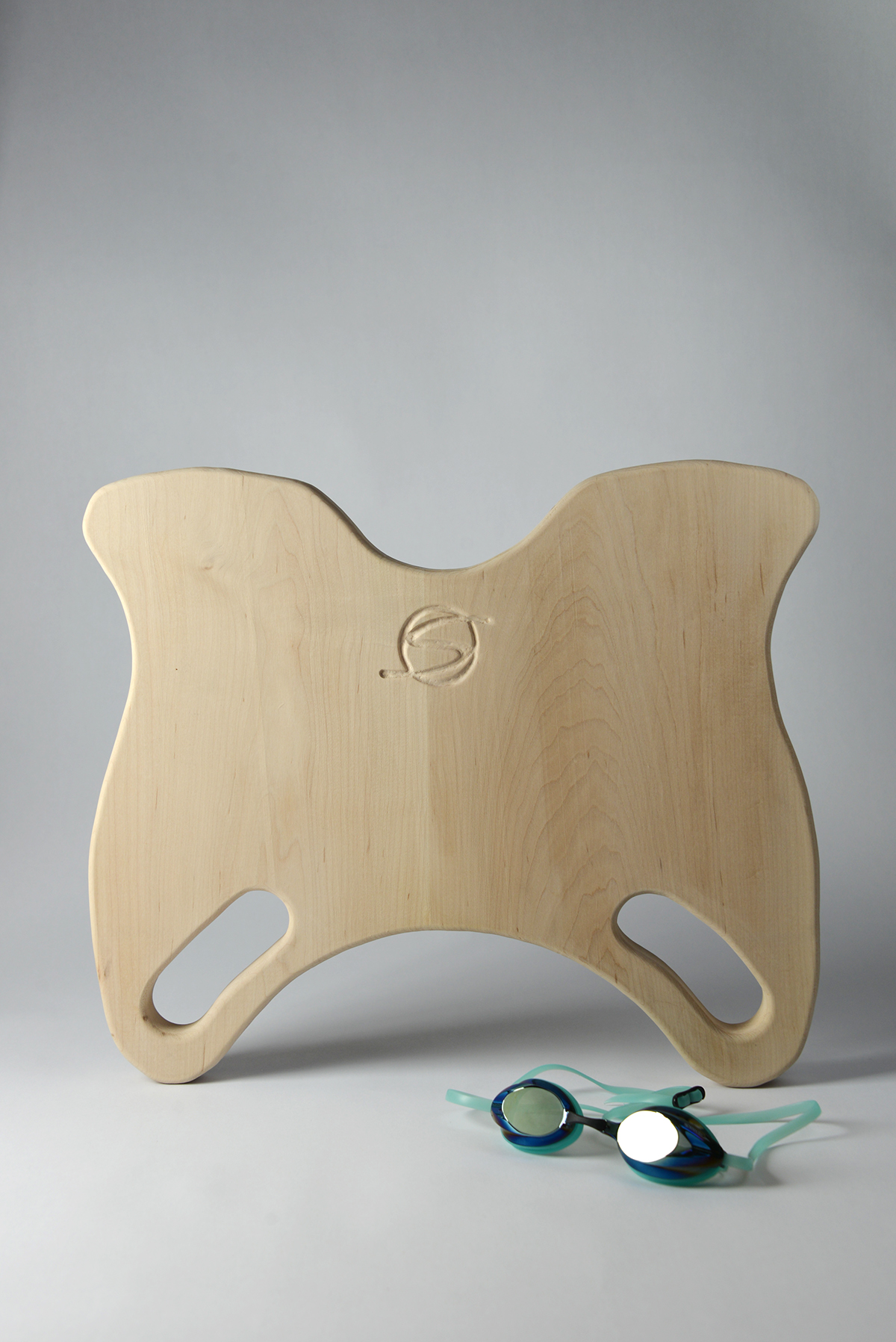
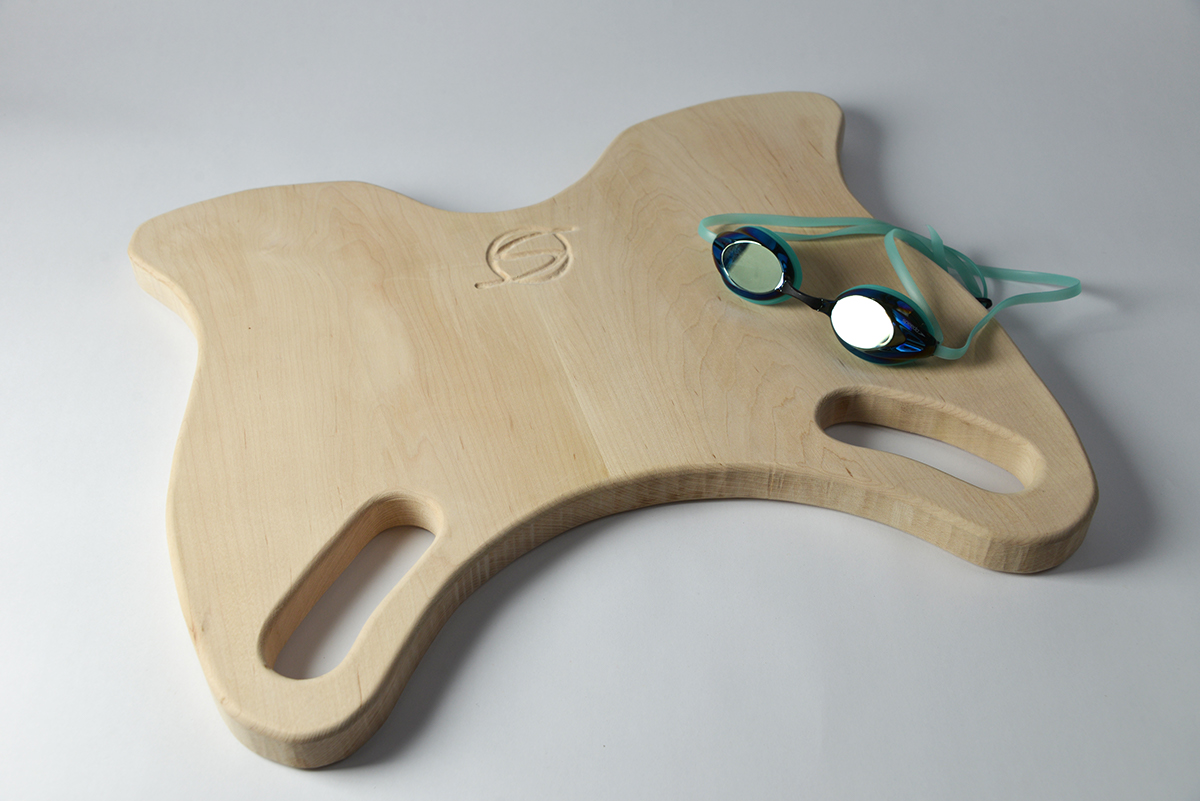
Back to the function of the kickboard, here are a few ways that the model can be held. It can be held in front of the body with the arms resting on the length of the board. The second image demonstrates that it can be held in front of the body using the handles. The third image shows that it can be used in reverse for greater resistance, due to the larger scoop at the front of the board. The board can also be used as in the second picture while on your back, as the handles provide an easy location for the hands. It can also be used perpendicular to the surface of the water so that there is greater surface area pushing against the water.

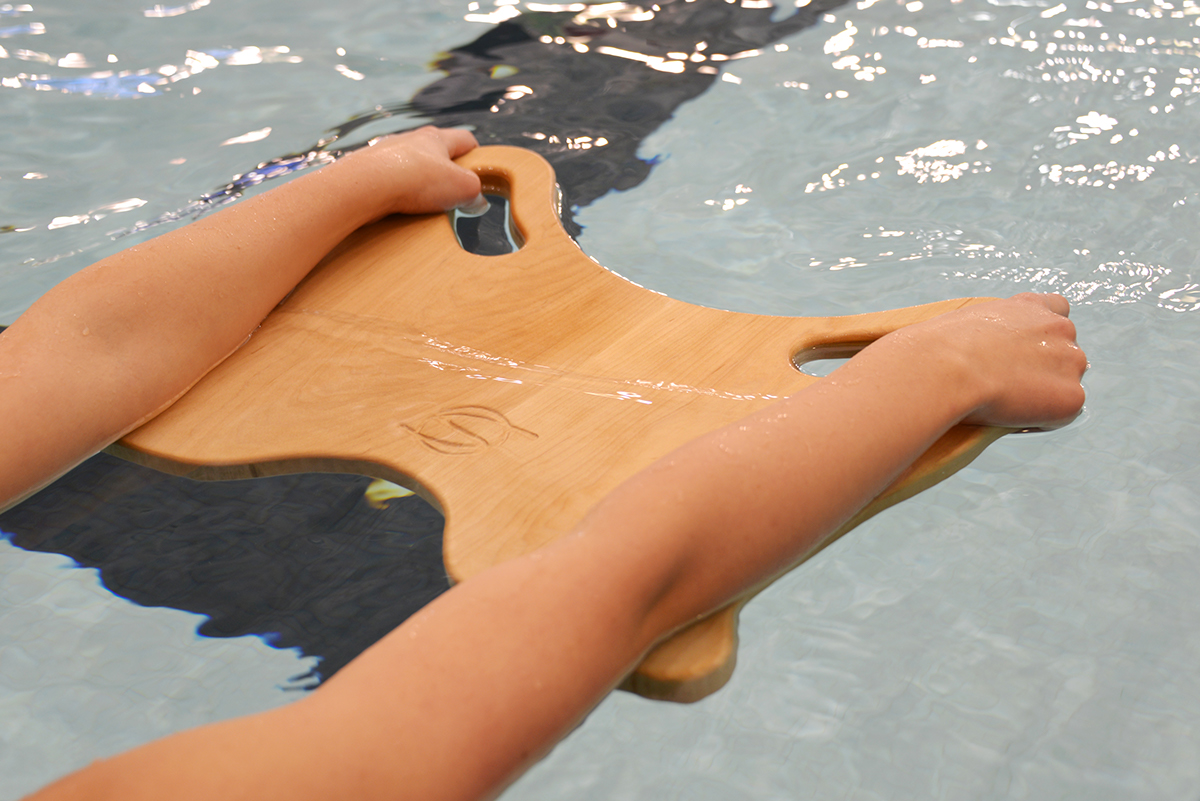

Below are a few renderings made in Keyshot of the kickboard in its environment as well as the potential color options once in production.
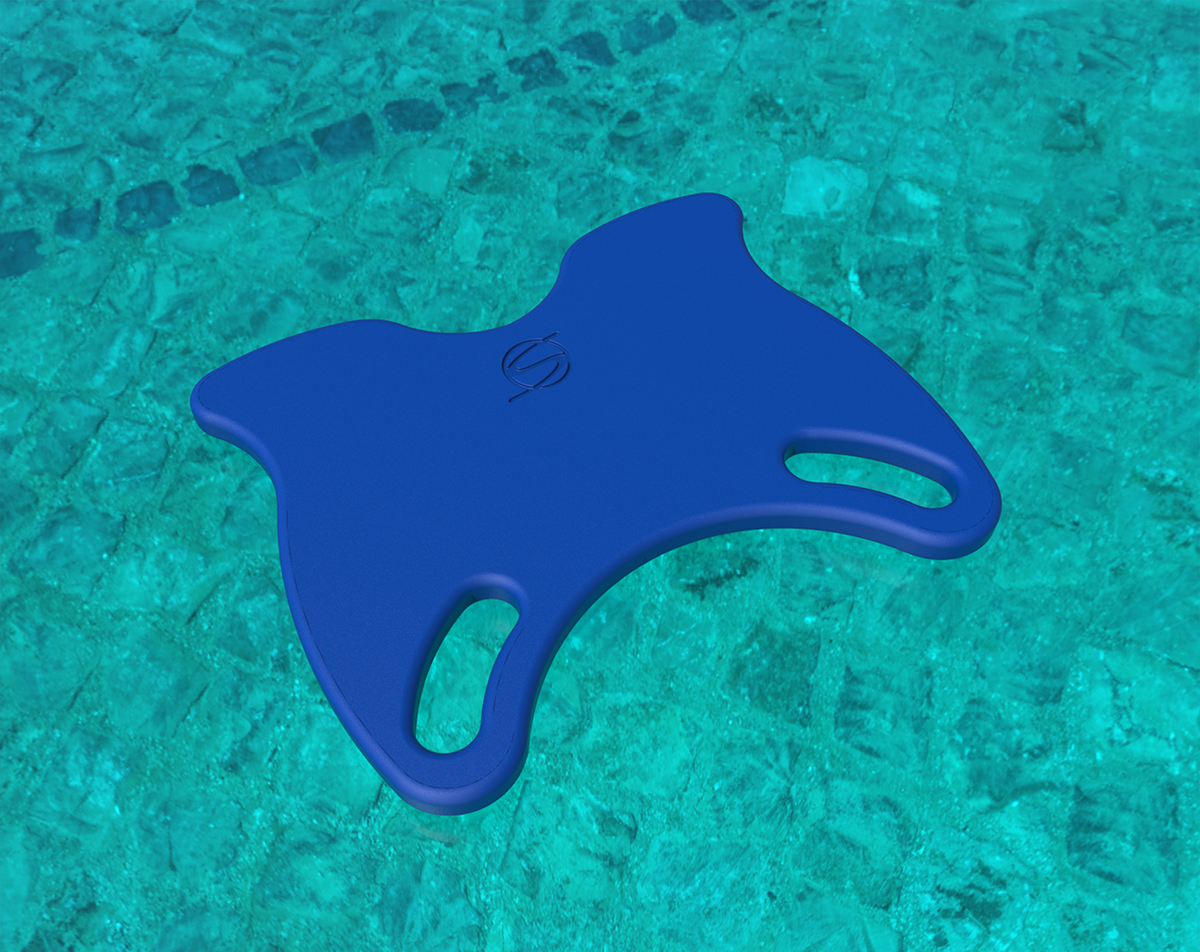


Below are potential ads for the brand I created, Streamline Swim Gear & Equipment. The last image offers some further options as to other products that could fit under this brand.
